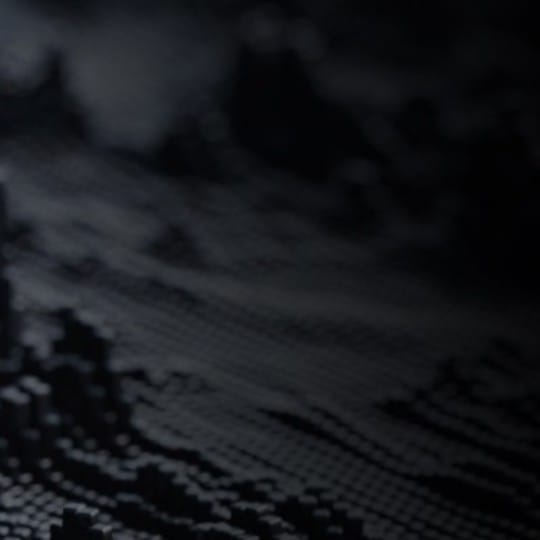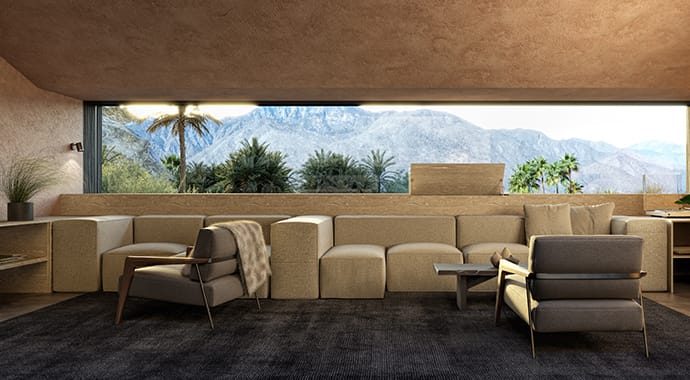
Palm Springs collaborative project proves to be a creative success
Discover how V-Ray for Sketchup joined forces with Archilime to visualize a stunning sustainable home.
V-Ray is a powerful rendering plugin for SketchUp, crafted to help designers, architects, and creators transform their SketchUp models into lifelike visuals.
From initial concept sketches to photorealistic renders, V-Ray supports you at every stage of the design process, enabling you to communicate your vision with clarity and impact.
 Model ©Trimble SketchUp
Model ©Trimble SketchUpV-Ray and SketchUp are the perfect team. SketchUp is the world's most widely used 3D modeling software for architecture and design.
And V-Ray is the world's #1 rendering software for architectural visualization. Put them together and you've got the perfect combo to take your SketchUp model to the next level.
With rendering features such as true-to-life lights, cameras, and materials, rendering with V-Ray is as real as it gets. For any project, you can see exactly how it will look. It's as close as you can come to the real thing before it’s built.
See key features >
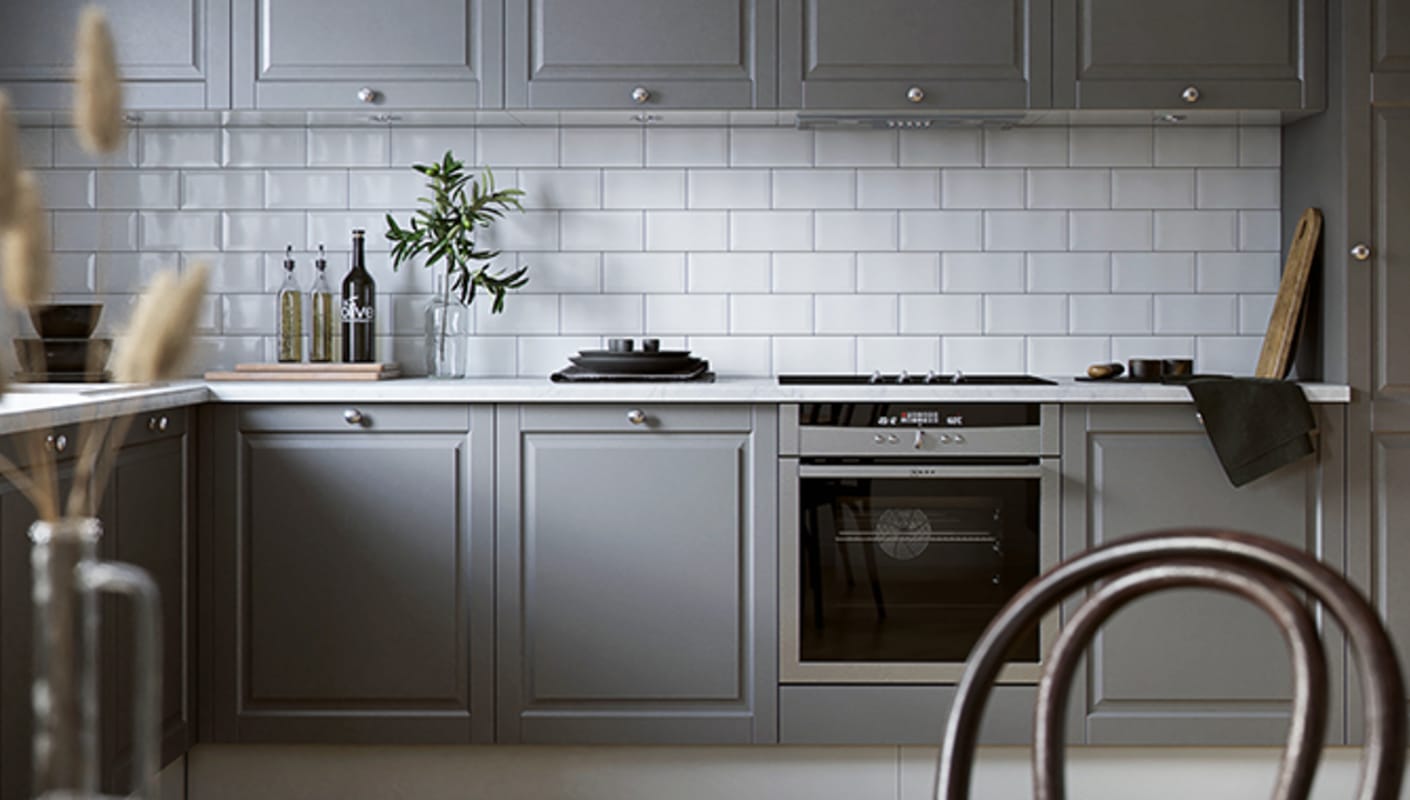 © Rezvan Hosseinian
© Rezvan HosseinianEmploy our curated collection of smart assets. Our Chaos Cosmos library includes high-quality models of furniture, accessories, vegetation, people and beautiful HDR skies so you can stage your architectural and interior designs in minutes.
Learn more about Chaos Cosmos >
Enhance your creative process with AI-powered tools. Refine people and vegetation with AI Enhancer, upscale renders with AI Upscaler, or generate materials instantly with AI Material Generator. Experience effortless control, speed, and quality.

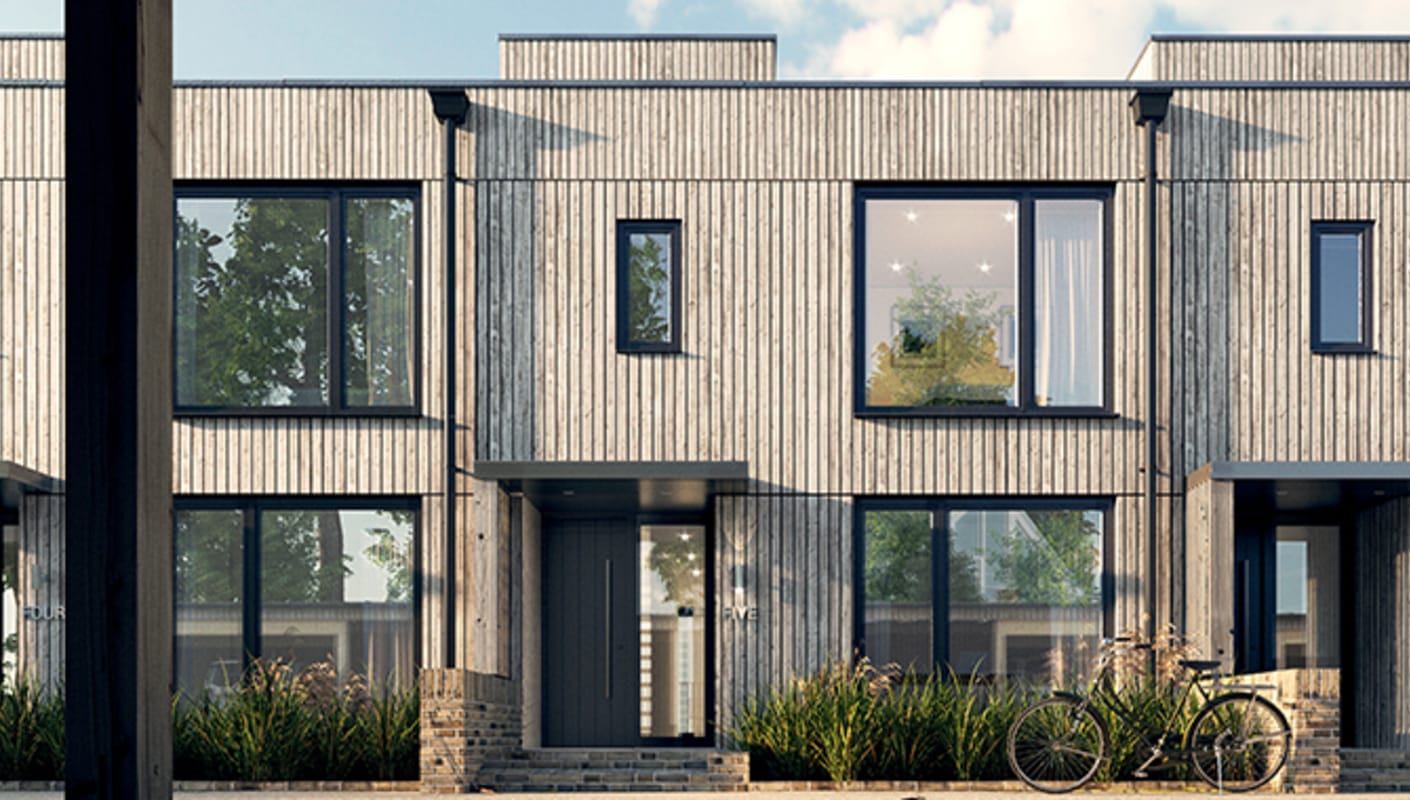 © Larch Studio
© Larch StudioV-Ray provides a comprehensive set of lighting, shading, rendering, and post-production tools, all within one platform, so you can maintain your creative flow without needing to switch between different applications.
With versatile and intuitive tools designed for both beginners and advanced visualization artists, V-Ray adapts effortlessly to any project’s demands and scales with you as your needs evolve.
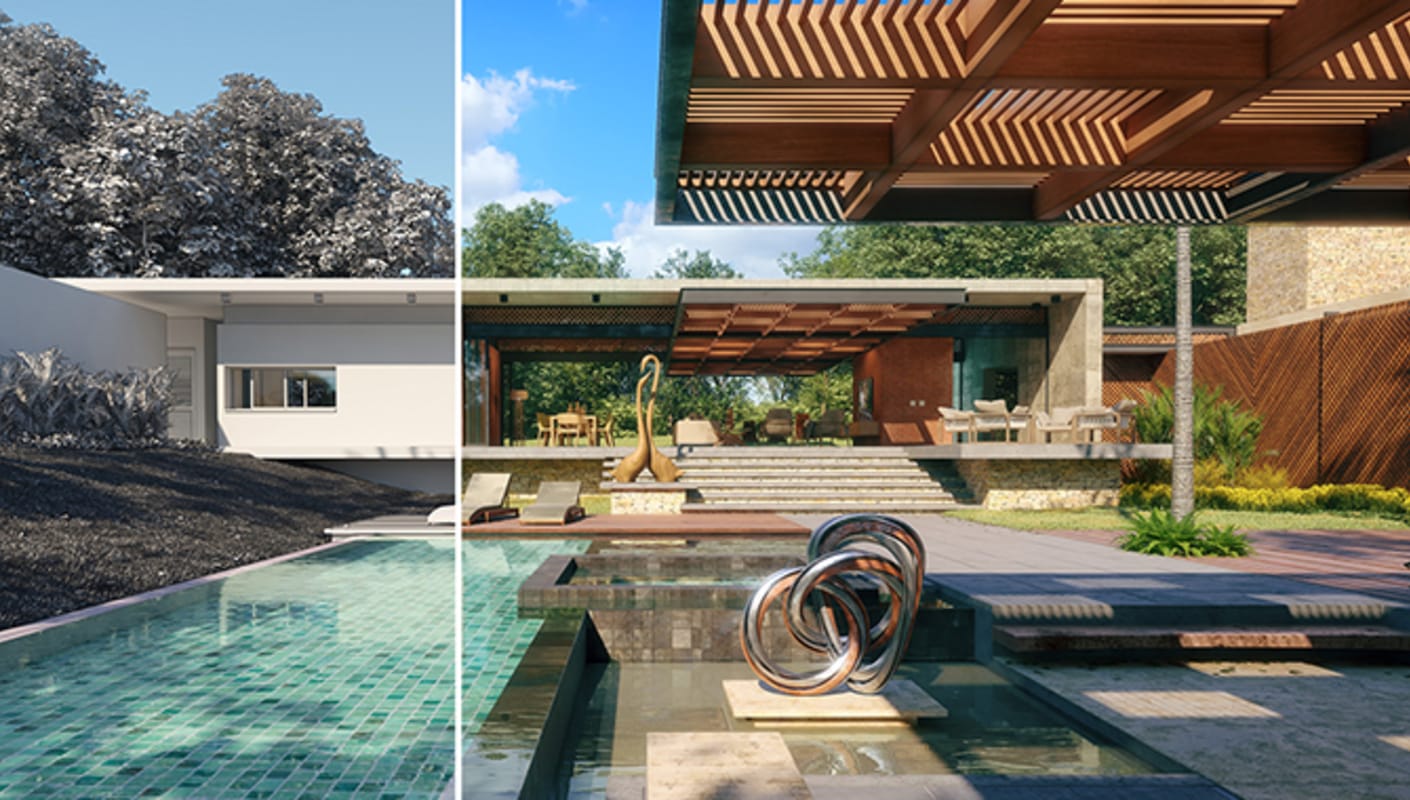 © Orlando Diaz
© Orlando Diaz
V-Ray is designed to work seamlessly with Enscape and Vantage, ensuring a seamless workflow between artists and designers using different tools.
Plus, you can leverage Chaos Cloud rendering services, from design and review to interactive virtual tours and cloud rendering.
Making stunning renders has never been this easy in SketchUp! With AI taking care of the busywork, like polishing details in a click or turning a photo into a material in seconds, you can focus on the fun part. Add stars, the moon, and the Milky Way to your night scenes, or scatter grass, trees, and people naturally with a few clicks. Now, V-Ray supports SketchUp 2026, so you can bring your ideas to life in the latest version.
Immerse your clients in your scenes via a simple URL, thanks to the new Chaos Cloud 3D Streaming. More magic, less effort, better renders.


With V-Ray for SketchUp, we've made creating high-quality renders as easy as modeling in SketchUp itself.
Install the software, which has an easy-to-use interface just like SketchUp's, and you can jump straight into the fun stuff like setting up your camera and lighting. Once you get to know V-Ray, you can make use of its seriously impressive feature set, and create great renders and emotionally compelling scenes.
Get a 30-day free trial and dive into the full range of features we offer. You will also get access to comprehensive training resources and dedicated customer support.
Start rendering for free in seconds.
Discover how V-Ray for Sketchup joined forces with Archilime to visualize a stunning sustainable home.
 Archilime/Architecture by Squirrel Design
Archilime/Architecture by Squirrel DesignArchilime's Dan Stone reveals how uniting Enscape and V-Ray for SketchUp can power up architectural workflows and open new creative possibilities.
 Jason Chen
Jason ChenLearn how archviz artist, Adrian Mocanu used V-Ray for SketchUp to create a winning submission inspired by a Kill Bill character.

